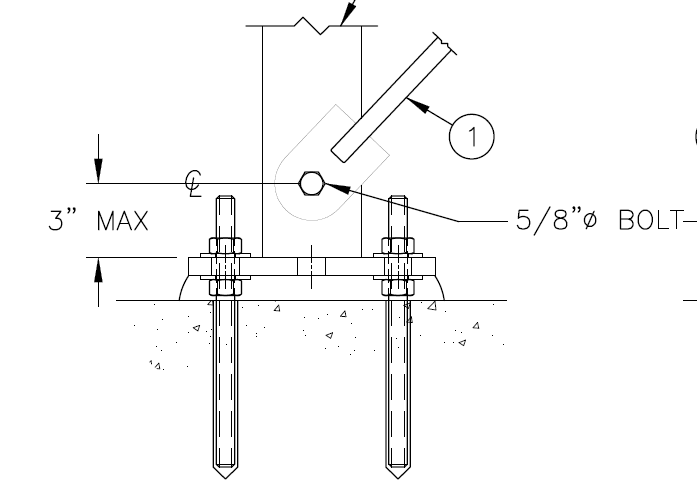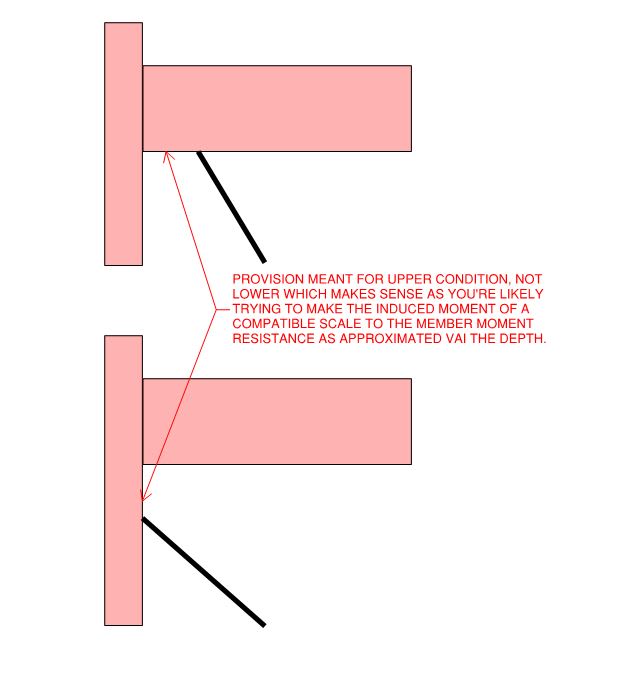An ordinary concentrically braced frame (OCBF) was designed in SDC D with 1/2" diameter steel rod welded to a plate and bolted to the face of a HSS4x4x1/4. The baseplate is attached to the concrete with 3/4" epoxy anchors. See the picture below for a sketch.

The detail shows a 3" offset from the baseplate to the bolt hole to maintain an eccentricity less than the beam depth as specified in Section F1.2 of the Seismic Provisions. Because the column is bolted to the foundation and there is no beam, 3" was deemed reasonably less than the 4" column depth.
Due to field issues, the contractor requested this 3" be increased to 6". The columns and base connections have no problem with the increased eccentricity.
The question is, at the base of a column, what is an appropriate allowable eccentricity given there is no beam?
Thanks in advance!

The detail shows a 3" offset from the baseplate to the bolt hole to maintain an eccentricity less than the beam depth as specified in Section F1.2 of the Seismic Provisions. Because the column is bolted to the foundation and there is no beam, 3" was deemed reasonably less than the 4" column depth.
Due to field issues, the contractor requested this 3" be increased to 6". The columns and base connections have no problem with the increased eccentricity.
The question is, at the base of a column, what is an appropriate allowable eccentricity given there is no beam?
Thanks in advance!


